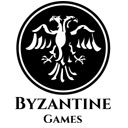I was a bit disappointed when I saw that the dismountable option could only be used during setup and not in actual combat. In a sense, this is no different than offering two separate units; one cavalry & one infantry.
Are there any thoughts of allowing units to dismount during combat?
dismountable in combat
-
TheSkirmishLord
- Corporal - 5 cm Pak 38

- Posts: 35
- Joined: Sun Oct 29, 2017 5:08 am
Re: dismountable in combat
Yeah I feel the same it would open up some interesting tactical options to dismount in battle. I assume it’s not allowed for historical reasons.
-
rbodleyscott
- Field of Glory 2

- Posts: 28052
- Joined: Sun Dec 04, 2005 6:25 pm
Re: dismountable in combat
Correct. Historically it was occasionally but rarely done. When we allowed it in previous wargames rules (e.g. early editions of DBM) it distorted to use of some armies by favouring gamey tactics that were not representative of history.
For example, the Mongols are known to have dismounted against the Burmese, because of their large number of elephants. However, allowing them to dismount at any time in the game rules led to the standard Mongol practice against any opponent in competitive wargames being to ride forward and then dismount - which we know is not how the Mongols fought historically against opponents without large numbers of elephants.
The only solution to preventing rare occurrences from dominating games is to refrain from allowing them in the rules.
Hence, in FOG2 Mongol cavalry will be allowed to dismount (at least in the list pertaining to the invasion of Burma), but only at deployment time.
--------------------------
Similarly there are documented cases of men-at-arms in the Hundred Years War dismounting to fight, but then remounting to pursue the beaten enemy. However, we deemed that this in fact occurs after the enemy army is broken (as per the victory conditions), hence should not be allowed during the game.
Richard Bodley Scott


Re: dismountable in combat
What about the British chariots described in Caesar's Gallic Wars:rbodleyscott wrote: ↑Tue Sep 18, 2018 7:11 am --------------------------
Similarly there are documented cases of men-at-arms in the Hundred Years War dismounting to fight, but then remounting to pursue the beaten enemy. However, we deemed that this in fact occurs after the enemy army is broken (as per the victory conditions), hence should not be allowed during the game.
33 Their manner of fighting from chariots is as follows. First of all they drive in all directions and hurl missiles, and so by the mere terror that the teams inspire and by the noise of the wheels they generally throw ranks into confusion. When they have worked their way in between the troops of cavalry, they leap down from the chariots and fight on foot. Meanwhile the charioteers retire gradually from the combat, and dispose the chariots in such fashion that, if the warriors are hard pressed by the host of the enemy, they may have a ready means of retirement to their own side. Thus they show in action the mobile of cavalry and the stability of infantry; and by daily use and practice they become so accomplished that they are ready to gallop their teams down the steepest of slopes without loss of control, to check and turn them in a moment, to run along the pole, stand on the yoke, and then, quick as lightning, to dart back into the chariot.
http://penelope.uchicago.edu/Thayer/E/R ... ar/4*.html
Is this kind of dismounting considered to happen "below" the level of dismounting that is modeled in FoG2 and is rather just a part of the unit's melee capabilities?
-
rbodleyscott
- Field of Glory 2

- Posts: 28052
- Joined: Sun Dec 04, 2005 6:25 pm
Re: dismountable in combat
Yup. When you consider how few actual dismounted men there would be on a given frontage when a unit of British chariots dismounted their warriors (the drivers remaining mounted), one would have to assume that their effect was more psychological ("heroic") than physical.MVP7 wrote: ↑Wed Sep 19, 2018 4:00 pmWhat about the British chariots described in Caesar's Gallic Wars:rbodleyscott wrote: ↑Tue Sep 18, 2018 7:11 am --------------------------
Similarly there are documented cases of men-at-arms in the Hundred Years War dismounting to fight, but then remounting to pursue the beaten enemy. However, we deemed that this in fact occurs after the enemy army is broken (as per the victory conditions), hence should not be allowed during the game.
33 Their manner of fighting from chariots is as follows. First of all they drive in all directions and hurl missiles, and so by the mere terror that the teams inspire and by the noise of the wheels they generally throw ranks into confusion. When they have worked their way in between the troops of cavalry, they leap down from the chariots and fight on foot. Meanwhile the charioteers retire gradually from the combat, and dispose the chariots in such fashion that, if the warriors are hard pressed by the host of the enemy, they may have a ready means of retirement to their own side. Thus they show in action the mobile of cavalry and the stability of infantry; and by daily use and practice they become so accomplished that they are ready to gallop their teams down the steepest of slopes without loss of control, to check and turn them in a moment, to run along the pole, stand on the yoke, and then, quick as lightning, to dart back into the chariot.
http://penelope.uchicago.edu/Thayer/E/R ... ar/4*.html
Is this kind of dismounting considered to happen "below" the level of dismounting that is modeled in FoG2 and is rather just a part of the unit's melee capabilities?
Richard Bodley Scott










